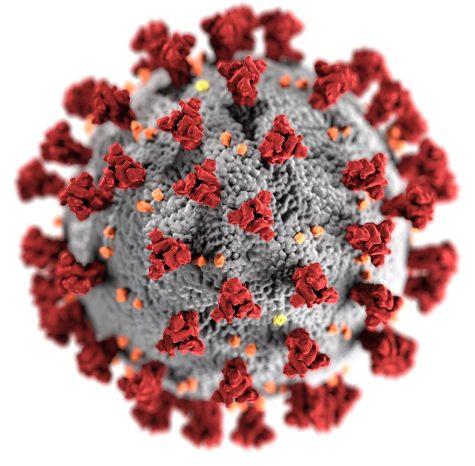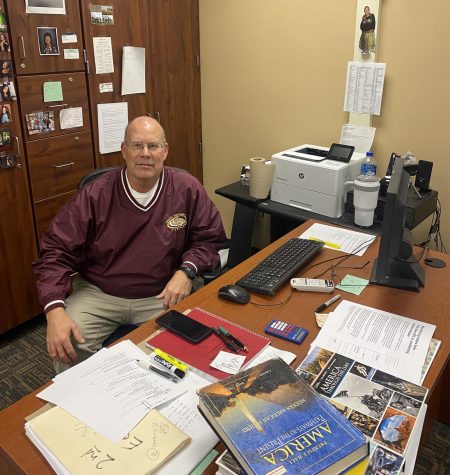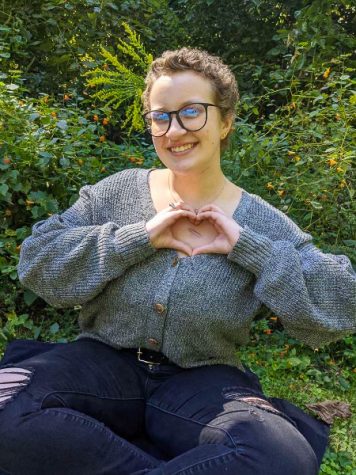A crisis unveiled: mental health in schools
As students deal with more mental health issues, schools need more resources to adequately help them.
Mounting homework, plans for the future, quizzes, tests and so much more, the demands on students negatively impact their mental health.
In the spring of 2020, schools nation-wide were rocked by the COVID-19 global pandemic. It created extreme problems for the education system: staffing shortages as the pandemic fueled a mass retirement from teachers, the introduction of online learning and many more systematic issues that are felt to this day. It also highlighted and perpetuated an already existing crisis in the nation’s schools: mental health.
While the pandemic ran its course, students were forced to attend school online, where they received little to no social interaction and fewer opportunities to learn. The result? A mental health crisis that would reverberate years after the onset of the pandemic.
This crisis has shown many flaws in the mental health support systems. The two main ones are a lack of funding for programs and a shortage of professionals to handle these complex situations.
Though the COVID-19 virus highlighted mental health issues, awareness and support programs have been telling people for years that mental illness is a problem in the nation’s teens. In the tri-state area, Youth First has operated for nearly twenty years. Youth First is an organization that spreads awareness for mental health, among other issues such as substance abuse and suicide. It provides social work programs for area youth and families. They are involved in 18 different school corporations, and in 2023 the non-for-profit will have been serving the area for 25 years. Gibson Southern High School’s Youth First counselor, Vicki Kirkman, serves the school in this capacity. She works with faculty and students to provide advice and help on a plethora of topics relating to the high school experience. A large chunk of this job has to do with mental health awareness. With the effects of COVID-19, mental health awareness has never been more important.

“I think mental health awareness is important because it is something that people are going to be dealing with for the rest of their lives,” Kirkman said. “We all need to have healthy mental health. We can start in schools by practicing some of those protective factors which would be: learning how to handle stress, recognizing when you need extra help and knowing how to ask for that help.”
Another job that is closely affected by a student’s mental health is teaching. As educators of America’s future, teachers are on the frontlines of the effects the COVID-19 pandemic had on students’ mental health.
Jennifer Davis teaches English at Gibson Southern High School. For those who have taken her class, they know that she is outspoken in her support for students. She often ends her class by telling her students, “Know you are loved!”
Teachers are mandated reporters, meaning they have to report any suspected mental issues they see in the classroom that could cause harm to the affected student or others. These warning signs are often hard to spot; teachers try, but there is simply no way to tell what is going on in a student’s mind. It is yet another burden on a position that is already carrying a heavy load.
Davis does the best she can. Being a teenager once, she understands what it was like and is committed to being someone who is always there for her students.
“If you want someone to talk to, if you want to complain about something, if you want to rant about something … I’m here; I will listen,” Davis said. “Because sometimes, that’s all people need.”
According to the Oxford dictionary, mental health is defined as “a person’s condition with regard to their psychological and emotional well-being.” Mental illnesses are what cause poor mental health, these can include depression and anxiety, among many other conditions and disorders.
In the school setting, where teenagers are constantly experiencing stress and undergoing physical and mental changes, issues regarding mental health are a given.
However, what does the community know about mental health? After decades of misperceptions and a poor grasp of what mental illnesses are, some stigmas still persist to this day that affect people’s views on mental issues.
“In the past, if you were expressing these emotions or feelings, you might be seen as weak or needing help,” Kirkman said. “But, there is nothing to be ashamed of if you need extra support.”
These stigmas and false perceptions can be combated in only one way: awareness. Whether it be through programs like the ones put in place by Youth First, or simply talking about the subject with friends, any way that these stigmas are proven false is an effective way to combat them. It is something that schools nationwide and at home can improve on.
“I don’t feel like any schools are really good at supporting the topic,” Gibson Southern senior Lily Evetts said. “I think that all students would feel more supported if it was promoted and talked about more. Specifically in our school, if our social counselor, Mrs. Kirkman, was promoted more as a resource for kids at the school.”
Awareness, while essential, is only a part of the problem. On top of the lack of students with these issues coming forward, the stigmas that affect perceptions about mental illness and the pandemic’s stress inducing qualities, another problem has emerged: a lack of professional help.
“Nationwide, there is a lack of funding and focus on mental health, and we definitely have room to grow in that area,” Kirkman said. “We have a shortage of mental health professionals. It’s hard to get an appointment; it’s hard to get a therapist lined up. There’s often a long wait period that can sometimes hinder people from getting help when they need it right away.”
An issue regarding student’s mental health is realizing they need it, or not seeking it out of embarrassment. Davis sees how this could be a problem. If students do not step up, how will the experts ever know the students need help?
“Honestly, I am not entirely sure [of how large of a problem poor mental health is], because a lot of people don’t talk about it,” Davis said. “This is not something we had to take a class on in school; this is not something that has cropped up until recently. If I had to take a guess, I would say that it is a lot bigger of an issue than we have yet to realize.”
While the scope of the problem is still not entirely known, thanks to a certain pandemic, the perspective on the issue has been changed.
“I think [the mental health crisis] is becoming well known because of 2020 and COVID,” Davis said.
The pandemic, in what psychologists might call a “stressor,” has given a glimpse at what lies inside students’ minds. This begs the question, how are schools reacting?
At Gibson Southern, from 2019 to 2022, there does not seem to be much of a change in help that is offered.
“I think we have done a lot of good things toward working on mental health, but I think we can do more,” Davis said.
This issue is one with more problems than solutions. Each student’s mental health is complex and different from any others. It is a problem that no one person, one part of the community can solve. Davis believes that spotting and helping those with mental illness should be an effort made by the entire community.
“I think [mental health issues] should be everyone’s responsibility,” Davis said. “I am just one piece of the puzzle. There are other people in every person’s life that should help reach out if they can to that individual if they notice something’s acting up, or if they are not seeming the way that they used to be.”
As a collective, what can people in a community do to help themselves and other struggling individuals with mental illness?
The answer, both simple and complex, is listening.
“One of the best things people can do is be a really good listener and to not provide judgment but a listening ear,” Kirkman said. “Also, provide some unconditional, positive comments. Really being able to understand what some warning signs are if people are truly suffering. [Such as] recognizing if people aren’t getting enough sleep, or if their personality has changed, or if they’re talking really hopeless and helpless; those are things to watch out for.”
The next step is knowing what resources are available and pointing them out to people suffering.
“[Another important factor is] being able to point people to the resources that they need to get the help,” Kirkman said.
Some resources at Gibson Southern include Kirkman herself, who helps students access mental health resources. Youth First has a website that is accessible to anyone in the school system and has many resources about mental health topics. People can also reach out to therapists or other professionals to seek help.
“There should be no shame in reaching out and asking for help when someone needs it,” Kirkman said.
While mental health issues will not be going away anytime soon, improving on available resources and overall awareness of the subject could make a vast difference in the health of the nation’s students. Looking at the progress made in the past few decades in schools and mental healthcare, the future of the United States’s students’ health is looking brighter by the day.
Your donation will support the student journalists of Gibson Southern High School. Your contribution will allow us to purchase equipment and cover our annual website hosting costs.

Luke Appman is a senior at Gibson Southern High School. He is a third year writer for "The Southerner" and current editor-in-chief. Appman is captain and...



